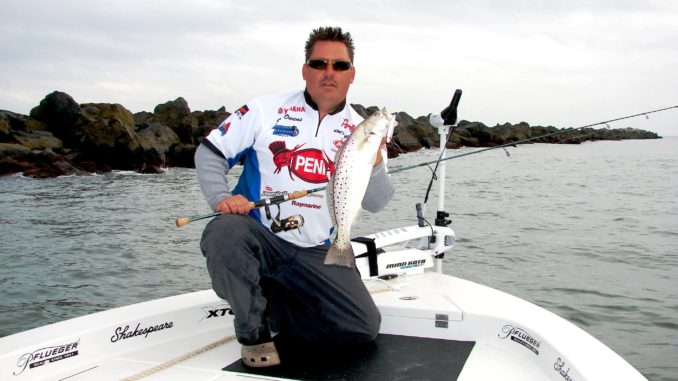
Masonboro Inlet is the only inlet along North Carolina’s southern coast with jetties, and it seems fish know that as well as fishermen. The south jetty is all large, rugged rocks, but the north jetty is a combination of a metal weir closer to shore, with large rocks completing the offshore end. Not only do the jetties stabilize the inlet, they create fishing opportunities that can’t be matched at inlets without jetties.
The north jetty, 3,639 feet long, was originally built as a single unit and completed in 1965. However, with only the north jetty in place, the inlet continued to shift and erosion to plague the island. Engineers decided another jetty was needed, and the south jetty, 3,450 feet long, was completed in 1980.
The jetties added multiple opportunities for inshore and nearshore fishermen, both inside them and along their outer wall. The rocks are large and angular and create many places for baitfish to hide. There are also nooks and crannies large enough to break the current and allow predator fish to rest and see what it sweeps by.
Wrightsville Beach and Masonboro Island are east-facing beaches, and there is usually some current running along the beach that carries bait to the outside of the jetties and then sweeps along the outside to the end. There is also several feet of tide change, and the tidal currents sweep a mixture of whatever baitfish are around through the inlet regularly. In November, this is typically the last of the mullet and shrimp for the year, and speckled trout, redfish, black drum and more gather around to feed. Inside the jetties, the falling tide is usually best, but there is sometimes good action during the rising tide, too. Outside the jetties, the action is usually best on the side the longshore current is hitting.
Guides like Stuart Caulder and Jot Owens fish the jetties regularly in the fall. Caulder likes to fish soft plastics and sinking hard lures beside the rocks, while Owens also likes to drift live baits along the rocks under corks. Both techniques are productive for speckled trout and red drum and occasionally draw strikes from stripers, sheepshead, gray trout, bluefish or tautogs in addition to the target species.
Local fishermen appreciate the jetties for stabilizing the inlet, helping control erosion and providing safe access to the ocean, but it’s the good fishing they always mention first. The jetties hold a variety during the fall and all are fun to catch. Most are also excellent table fare, too.




Be the first to comment